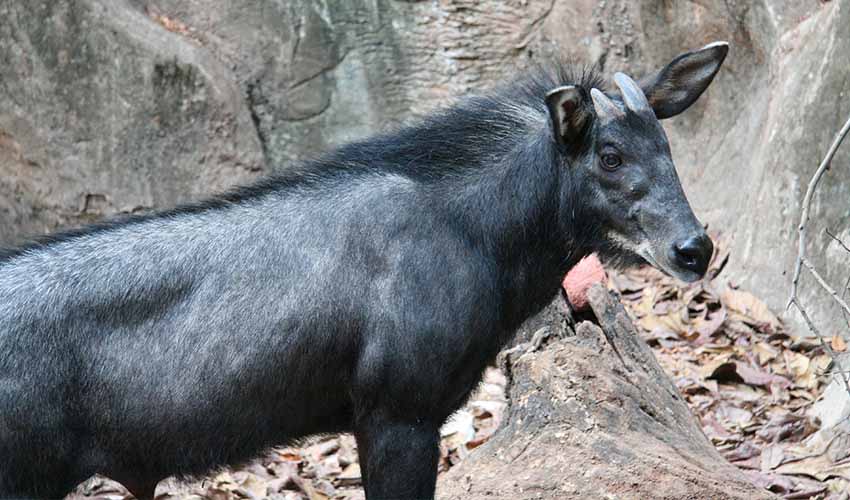Sometimes called the Sumatran or Chinese serow, it is one of Asia’s most rugged mountain-dwelling mammals. Belonging to the same genus as other serows, it is found across a wide range, stretching from the steep Himalayan foothills of Nepal and Bhutan through northern India, Myanmar, Thailand, Laos, Vietnam, and down into Sumatra. This broad distribution makes it one of the most widespread serow species, but it also faces different challenges depending on the region. Its thick, coarse coat is usually dark brown to black with lighter streaks, and a distinctive mane of bristly hair runs from its head along the back, giving it a scruffy but formidable look.
One of the most striking traits of the Mainland Serow is its ability to thrive in some of the harshest landscapes Asia has to offer. These animals are usually found at elevations between 1,000 and 4,500 meters (3,281 – 14,764 feet), inhabiting steep rocky slopes, cliffs, and dense forests. Their split hooves and muscular limbs give them an extraordinary grip, allowing them to move nimbly across near-vertical terrain. They are primarily crepuscular, meaning most active at dawn and dusk, and spend the rest of the day hidden in dense vegetation or caves to avoid predators and the heat. While solitary by nature, Mainland Serows are territorial and often mark their ranges with droppings or scent from glands near the eyes. When two individuals cross paths, disputes can be intense, with horns and headbutts used to establish dominance, though fights are usually short-lived.
Regarding diet, the Mainland Serow is a classic browser, feeding on various leaves, grasses, shoots, fruits, and bark. This adaptability allows it to survive in habitats ranging from subalpine forests to tropical hillsides. Remarkably, it is also an excellent swimmer, capable of crossing rivers or reaching small offshore islands when necessary.
Distribution
 Bangladesh
Bangladesh Bhutan
Bhutan Cambodia
Cambodia China
China India
India Indonesia
Indonesia Laos
Laos Malaysia
Malaysia Myanmar
Myanmar Nepal
Nepal Thailand
Thailand Vietnam
VietnamAnything we've missed?
Help us improve this page by suggesting edits. Glory never dies!
Suggest an editGet to know me
Terrestrial / Aquatic
Altricial / Precocial
Polygamous / Monogamous
Dimorphic (size) / Monomorphic
Active: Diurnal / Nocturnal
Social behavior: Solitary / Pack / Herd
Diet: Carnivore / Herbivore / Omnivore / Piscivorous / Insectivore
Migratory: Yes / No
Domesticated: Yes / No
Dangerous: Yes / No




